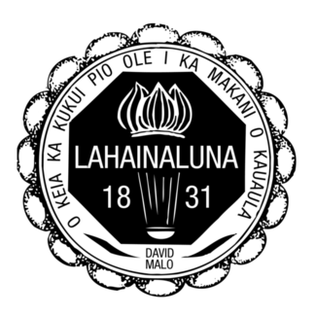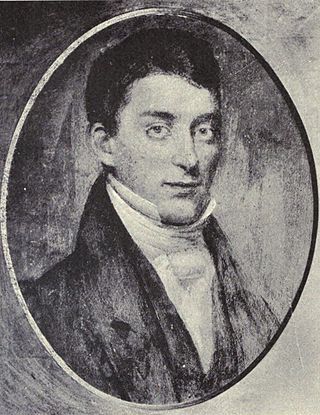Notes
- ↑ Kū Kanaka, Stand Tall: A Search for Hawaiian Values by George Huʻeu Kanahele
- ↑ David Malo, Hawaiian antiquities (Moolelo Hawaii)
In Hawaiian mythology, Kuhimana was a god of soothsayers. [1]
Historian David Malo said that "soothsayers and those who studied the signs of the heavens (kilokilo) worshipped the god Kuhimana." [2]
He was also called god of astrologers.
Kahuna is a Hawaiian word that refers to an expert in any field. Historically, it has been used to refer to doctors, surgeons and dentists, as well as priests, ministers, and sorcerers.

Hula is a Hawaiian dance form expressing chant (oli) or song (mele). It was developed in the Hawaiian Islands by the Native Hawaiians who settled there. The hula dramatizes or portrays the words of the oli or mele in a visual dance form.
The aliʻi were the traditional nobility of the Hawaiian islands. They were part of a hereditary line of rulers, the noho aliʻi.
Hawaiʻiloa is a mythical Hawaiian fisherman and navigator who is said to have discovered the island of Hawaiʻi.

The Makahiki season is the ancient Hawaiian New Year festival, in honor of the god Lono of the Hawaiian religion.
Paʻao is a figure from Hawaii. He is most likely a Hawaiian historical character retold through Hawaiian legend. According to Hawaiian tradition and folklore, he is said to have been a high priest from Kahiki, specifically "Wewaʻu" and "ʻUpolu." In Hawaiian prose and chant, the term "Kahiki" is applied in reference to any land outside of Hawaii: the linguistic root is conclusively derived from Tahiti. "Upolu" point to actual places in Samoa; and, Hawaiian scholars and royal commentators consistently claim Paʻao came from Samoa.

Kalanikauikaʻalaneo Kai Keōpūolani-Ahu-i-Kekai-Makuahine-a-Kama-Kalani-Kau-i-Kealaneo (1778–1823) was a queen consort of Hawaiʻi and the highest ranking wife of King Kamehameha I.

Lahainaluna High School is a public high school with the grades 9-12 located in Lahaina. Lahainaluna High School is also a public boarding school. It was founded in 1831 as a Protestant missionary school, originally named Lahainaluna Seminary. The early missionaries who arrived in Lahaina in 1823 explained to the Hawaiian Royalty the importance of an educational institution in the American style.

The Bedlam in Goliath is the fourth studio album by American progressive rock band the Mars Volta, released on January 29, 2008, on Gold Standard Laboratories and Universal Motown Records. Produced by guitarist and songwriter Omar Rodríguez-López, the album's creation was fraught with strange occurrences after an experience with a ouija that Rodriguez-Lopez bought as a gift for vocalist Cedric Bixler-Zavala. The album is their first to feature drummer Thomas Pridgen, and the last to include guitarist and sound manipulator Paul Hinojos, wind multi-instrumentalist Adrián Terrazas-González, and keyboardist Isaiah "Ikey" Owens.
Kanipahu was an ancient Hawaiian chief. He was of the Pili line.
In Hawaiian mythology, Kuhimana was a High Chief who ruled as the 7th known Moʻi of Maui. He was the sovereign king or chief of the island of Maui and is mentioned in old chants as semi-mythical person.
Loe was a High Chief in ancient Hawaii. Loe was the sovereign chief of the island of Maui, mentioned in old chants, and ancestor of Kalahumoku II.

Hawaiian religion refers to the indigenous religious beliefs and practices of native Hawaiians, also known as the kapu system. Hawaiian religion is based largely on the tapu religion common in Polynesia and likely originated among the Tahitians and other Pacific islanders who landed in Hawaiʻi between 500 and 1300 AD. It is polytheistic and animistic, with a belief in many deities and spirits, including the belief that spirits are found in non-human beings and objects such as other animals, the waves, and the sky. It was only during the reign of Kamehameha I that a ruler from Hawaii island attempted to impose a singular "Hawaiian" religion on all the Hawaiian islands that was not Christianity.

Kalahumoku I—also known as Kalahuimoku—was an ancient Hawaiian noble and Chief of Hana, Hawaii. It's unknown when Kalahumoku was born. The Chief is mentioned in old chants.

David Malo or Davida Malo (1795–1853) was a chiefly counselor, a Hawaiian intellectual, educator, politician and minister. He is remembered by subsequent generations of Hawaiian people and scholars primarily as a Native Hawaiian historian of the Kingdom of Hawaii. In 1852 he was ordained as a minister at Kēōkea, Maui.

Temple Emanu-El is a Reform Jewish congregation and synagogue, located at 2550 Pali Highway, in Honolulu, Hawaii, in the United States. Founded in 1938, the congregation joined the Union for Reform Judaism in 1952, and the synagogue building was consecrated in 1960 under the spiritual leadership of Rabbi Roy A. Rosenberg. The architect was Edward Sullam, and the builder was T. Takahashi. The sanctuary is decorated with 12 8-foot (2.4 m) paintings by the New Mexico-based artist Alice Flitter.
Elias Abraham Rosenberg was a Jewish immigrant to the United States who, despite a questionable past, became a trusted friend and adviser of King Kalākaua of Hawaii. Regarded as eccentric, he lived in San Francisco in the 1880s and worked as a peddler selling illegal lottery tickets. In 1886, he traveled to Hawaii and performed as a fortune-teller. He came to Kalākaua's attention, and endeared himself to the king with favorable predictions about the future of Hawaii. Rosenberg received royal appointments to several positions: kahuna-kilokilo, customs appraiser, and guard. He was given lavish gifts by the king, but was mistrusted by other royal advisers and satirized in the Hawaiian press.

Sheldon Dibble was a missionary to Hawaii who organized one of the first books on Hawaiian history, and inspired students to write more.
In Hawaiian mythology, Nuakea is a beneficent goddess of milk and lactation.

John Mākini Kapena was a politician, diplomat and newspaper editor who served many political roles in the Kingdom of Hawaii. He served as Governor of Maui from 1874 to 1876, Minister of Finance from 1876 to 1878 and again from 1883 to 1886, Minister of Foreign Affairs from 1878 to 1880, Postmaster General from 1881 to 1883 and Collector General of Customs from 1886 to 1887. From 1874 to 1875, he accompanied King Kalākaua on his state visit to the United States to negotiate the Reciprocity Treaty of 1875. In 1882, he traveled to Tokyo as Envoy Extraordinary and Minister Plenipotentiary to the Court of Japan to negotiate Japanese immigration to Hawaii.